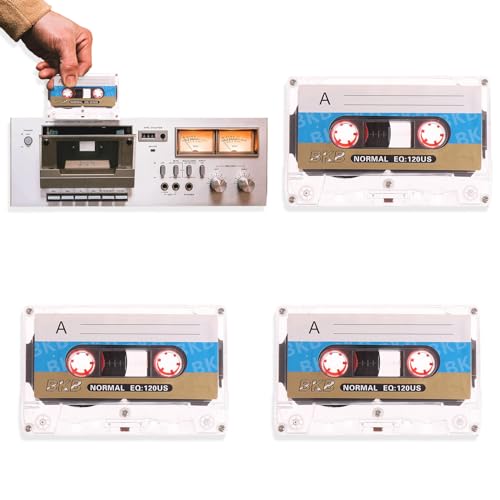What is Bias on Audio Cassette Tapes?
Before we delve into what bias is, we must first understand how an audio cassette tape works. An audio cassette tape is a magnetic tape that stores analog sound recordings. When sound is recorded onto the tape, the tape’s magnetic particles align themselves in a pattern that represents the sound’s waveform. To play back the sound, the tape is fed through a tape player and a magnetic inductor converts the magnetic signal back into an electric signal sent to speakers or headphones.
What Causes Bias on Audio Cassette Tapes?
Bias is a high-frequency signal that’s added to the audio signal before being recorded onto the tape. This high-frequency signal helps to reduce distortion and noise that could be introduced into the recording. As the magnetic particles align themselves with the bias signal, they become more responsive to the incoming audio signal, and the recording quality improves. The bias level is typically set by the recording equipment used, and choosing the right level is crucial for getting the best possible recording quality.
Bias Settings on Audio Cassette Tapes
The two most common bias settings for cassette tapes are AC bias and DC bias. AC bias is used mainly for consumer-grade tapes, while DC bias is primarily used for professional-grade tapes. The primary difference between the two is that AC bias has a higher bias frequency than DC bias. This means that AC bias can achieve a higher signal-to-noise ratio, while DC bias excels in recording in higher frequency ranges.
Importance of Bias Values
Choosing the right bias level for a recording can be crucial for achieving maximum recording quality. Too much bias can lead to distortion, while too little bias can lead to increased noise levels. The specific bias level can depend on a variety of factors, such as the recording equipment used, the tape type, and the amount of high-frequency content in the recording.
Bias in Today’s World
With the rise of digital recording and storage technologies, analog audio recording and storage, including cassette tapes, has seen a significant decrease in usage. However, many people still appreciate the unique sound character that analog audio recordings provide, and cassette tapes remain popular among some music enthusiasts. In conclusion, while bias may not have the same importance that it used to, it’s still a critical aspect of achieving quality audio recordings on cassette tapes.






![BLAST (RED) [CASSETTE]](https://m.media-amazon.com/images/I/41jFyKU6SjL.jpg)